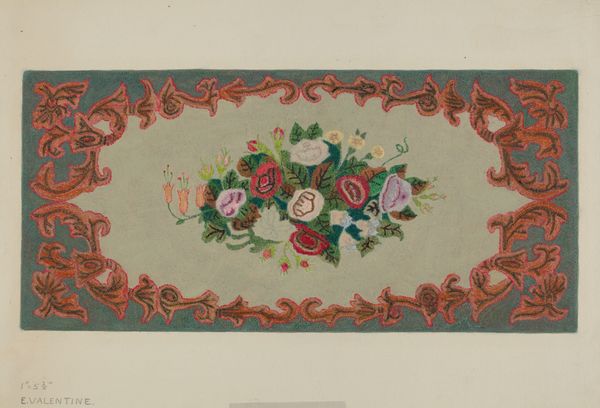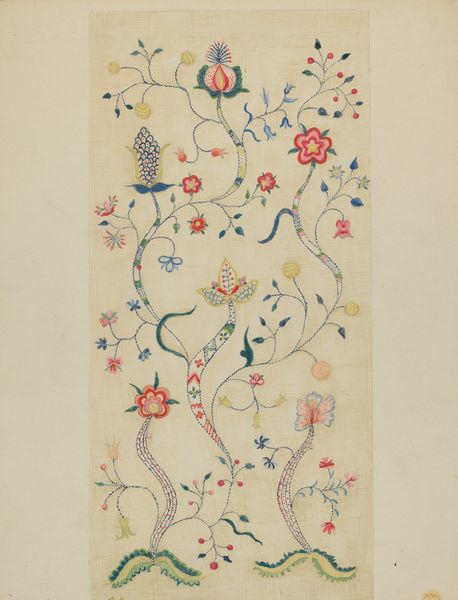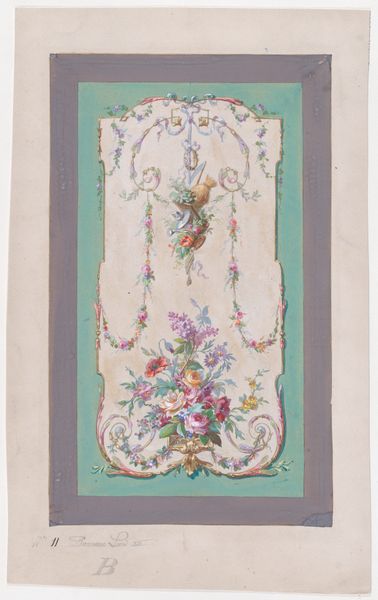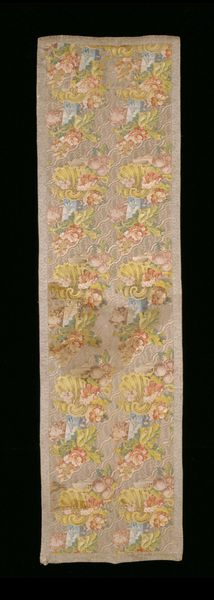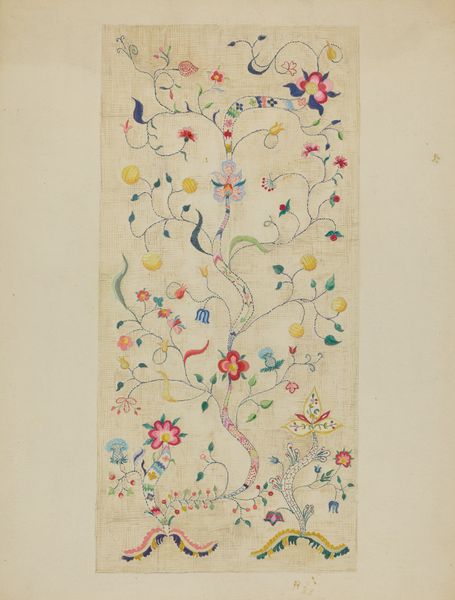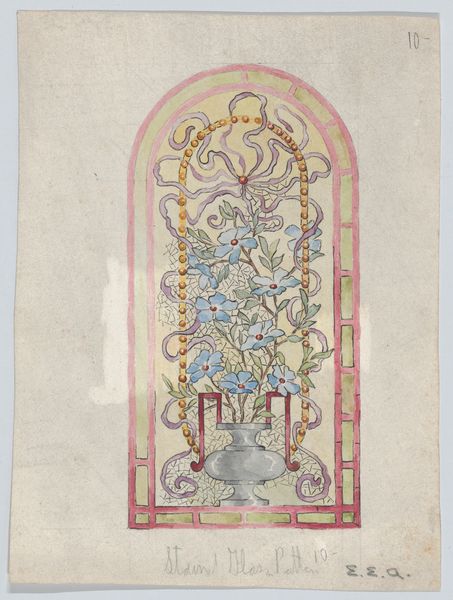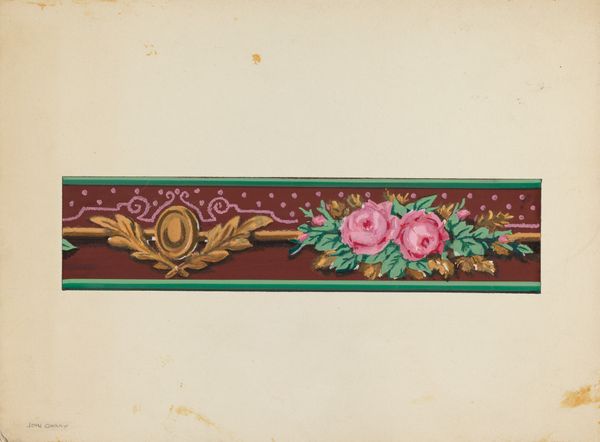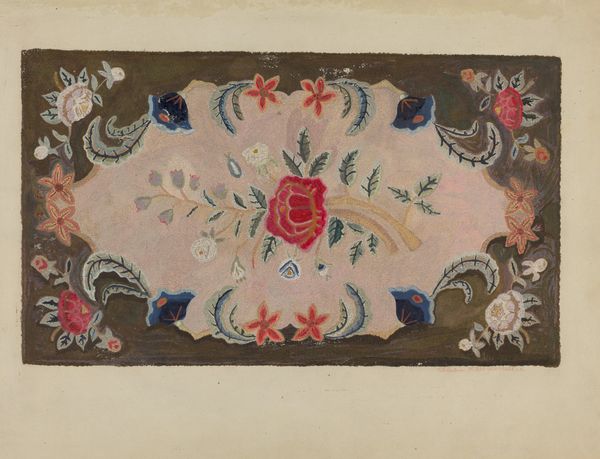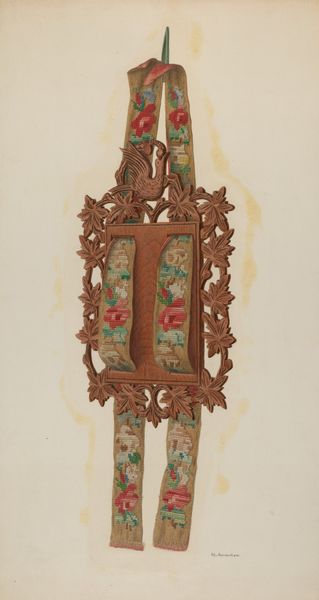
drawing, watercolor
#
drawing
#
water colours
#
watercolor
#
decorative-art
#
watercolor
Dimensions: overall: 20.5 x 30 cm (8 1/16 x 11 13/16 in.) Original IAD Object: 37 1/2" long; 21" wide
Copyright: National Gallery of Art: CC0 1.0
Curator: Good morning! Today, we're looking at Lillian M. Mosseller's "Hooked Rug" from around 1936. She used watercolor to create this study. What strikes you initially? Editor: It's quite delicate. The pastel colors and flowing forms give it a dreamlike, almost ethereal quality. It feels very ornamental. Curator: Exactly. Mosseller was exploring the visual possibilities within what's often seen as a functional object. Rug hooking, typically considered a craft done by women, gained popularity for its utility and accessible materials, such as fabric scraps. Editor: The artist uses watercolor to mimic the texture and density of a rug, playing with different hues within the overall pastel scheme. This allows light to filter in such a way as to perceive relief and structure, where little actually exists. Curator: Right, there's a tension here. It looks handmade, which ties into its crafting roots. Hooked rugs offered a creative outlet for many women in the early 20th century, who found innovative ways to use recycled and repurposed materials, like old clothing, in practical yet artistic designs. Editor: Yet the formality of the central floral design, balanced by the more elaborate framing details, feels intentional, and maybe slightly disconnected from those homespun origins. Curator: True, that duality is compelling. The work points to a specific type of making—the kind born from necessity—but also the desire to embellish and find beauty in everyday life. We are seeing these items repurposed as decoration. Editor: A demonstration of utility and artistry blended into a single design. Thanks for pointing that out. Curator: My pleasure. Considering its creation, the material accessibility that Mosseller's art exemplifies makes it all the more fascinating to me.
Comments
No comments
Be the first to comment and join the conversation on the ultimate creative platform.
